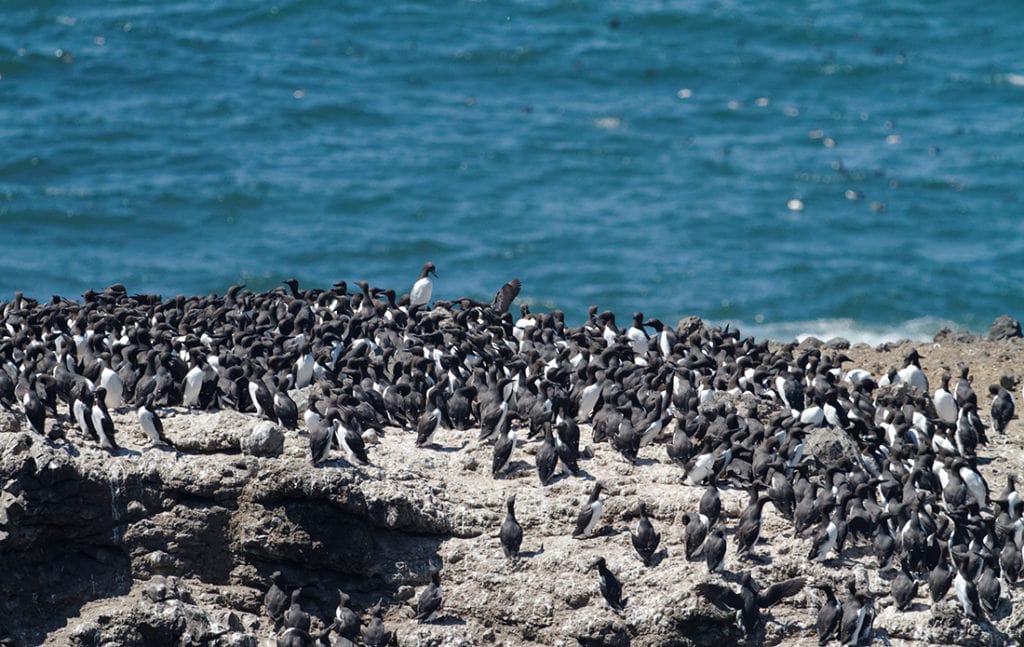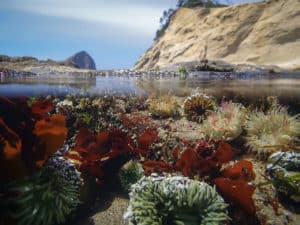Rocky Habitats Protection
Oregon’s iconic rocky habitats are both biologically and culturally important, making up 41% of the states 362 mile coastline. From famous Haystack Rock on the north coast to the numerous majestic sea stacks and rock arches off Oregon’s beautiful south coast, these rocky habitats support a wealth of marine life from colonial nesting seabirds, kelp beds, and thousands of fish and invertebrate species. These breathtaking rocky features and headlands attract millions of visitors and recreationists each year.
The state of Oregon recently updated its Rocky Habitat Management Strategy (i.e. Plan) providing the opportunity to increase protections of the most vital rocky shore habitats in Oregon. Bird Alliance of Oregon played a leadership role in helping incorporate stronger conservation policies in the updated plan. We also are facilitating coastal partners in their efforts to nominate new rocky habitat site designations as part of an on-going public proposal process.

Rocky Habitat Importance and Threats
Rocky habitats provide critical nesting habitat to over one million colonial nesting seabirds in Oregon. They are also home to rocky shore avian specialists like the Black Oystercatcher and Harlequin Duck that rely almost entirely on shellfish for food. Oregon’s rocky habitats support productive kelp and seagrass beds, marine mammal haul-out sites, hundreds of fish species including important spawning areas for juvenile fish, and thousands of invertebrate species including sea stars, anemones, and shellfish. These epicenters of rich marine biodiversity are often next to areas of high human use and are therefore especially vulnerable to disturbance, pollution, and other impacts.
Rocky habitat types in Oregon include nearshore rocks and islands, precipitous headlands, rocky beaches, and seaside cliffs – this includes areas exposed during low tide as well as submerged rocky reefs.

Rocky Habitats Strategy
The plan used to manage Oregon’s rocky habitat resources was originally written in 1994 and published as Chapter 3 of the Territorial Sea Plan which acts as a guiding framework for agencies to manage the coastal environment. The Rocky Habitats Management Strategy provides a broad plan to manage tide pools, rocky beaches, and headlands that make up Oregon’s rocky habitats. The new version of the plan is much improved to include new policies that strengthen subtidal protections and create stronger linkages to climate change related efforts. The new plan also includes a new public proposal process for designating new sites.
There are 3 types of rocky habitat site designations:
| Marine Education Area (MEA) “Marine Garden” | Marine Research Area (MRA) | Marine Conservation Area (MCA) |
|
|
|
The Oregon Department of Land Conservation and Development (DLCD) is the agency implementing the Rocky Habitat Management Strategy. Click here for more background on this process as well as an interactive map depicting each designated site.
What’s Next
With the Rocky Habitat Management Strategy now complete focus has shifted to nominating new sites and ensuring there is adequate support to implement the plan for the long-term. Two new sites have recently been accepted for designation (Coquille Point as a Marine Garden and Cape Blanco as a Marine Research Area). Six additional sites are currently under consideration for designation as Marine Conservation Areas. These sites include: Ecola Point, Chapman Point, Cape Lookout, Cape Foulweather, Fogarty Creek, and Blacklock Point.
Bird Alliance of Oregon is working with coastal partners to facilitate moving these new site proposals forward. We will also be working to ensure that there is both internal agency and community support to successfully implement the strategy for years to come.

How You Can Help
- Stay tuned for action alerts for public comment and for talking points on recommendations for new sites and Rocky Habitat Management Strategy implementation
- Attend an upcoming meeting or presentation on the process
- Review the list of designated and non-designated rocky shore line sites and let us know if you have any site recommendations to increase protection
- Get involved in one of our coastal community science projects
